How do you fly a RC helicopter for beginners?
To fly an RC helicopter, start with a beginner-friendly model, practice basic maneuvers like hovering in an open space, and ensure regular maintenance for safety.
“Every flight is a story, make yours a bestseller.”
Introduction to RC Helicopters
Welcome to the sky-high club of RC helicopters, where the dreams of flying aren’t just for birds and superheroes. Remember when you were a kid, and you pretended to fly, arms outstretched, making whoosh sounds? Well, now you can do it for real (sort of), and with a remote control, not just your imagination!
Flying an RC helicopter is like riding a bike, except the bike is in the air, and you’re not on it. It’s thrilling, a bit daunting, but mostly, it’s a lot of fun once you get the hang of it. Whether you’re aiming to dazzle spectators with your aerial acrobatics or just trying not to crash into the neighbor’s cat, you’re in for a fantastic adventure.

Choosing Your First RC Helicopter
Picking your first RC helicopter is akin to choosing a pet. You want one that matches your lifestyle. Are you a low-maintenance, easy-going person? A coaxial beginner helicopter might be your best buddy. Fancy yourself as a bit of a thrill-seeker? Perhaps a single-rotor beast is more your speed.
But beware, the world of RC helicopters has more options than a gourmet sandwich shop. From the zippy Blade Nano S2 to the stately DJI Mavic Mini, your choices are as varied as they are exciting.
It’s essential to find the right balance between performance, price, and, well, not crashing it on your first flight.
Here’s a pro tip: starting small isn’t admitting defeat. It’s ensuring you won’t turn your new helicopter into an expensive, unrecognizable pile of parts on its maiden voyage. Plus, it’s way easier to explain to your partner why you bought a $60 Syma S107G instead of a $399 DJI Mavic Mini that’s now part of the tree outside.
Understanding the Major Components of RC Helicopters
Diving into the anatomy of an RC helicopter without a guide can feel like disarming a bomb with all the wires crossed. Fear not! I’m here to defuse the situation with some essential insights.
First up, the rotor blades: the unsung heroes of lift. They’re like the wings of your helicopter but with a spin. Keeping them in tip-top shape is crucial unless you fancy your helicopter more as a lawn ornament.
Then we have the gyroscopes, which are like the inner ear of your helicopter. They keep things stable, so you don’t end up doing unintentional barrel rolls. And let’s not forget the servos, the tiny but mighty muscles that control the movement of your helicopter. Without them, you’d be all throttle and no direction, like a toddler on a sugar rush.
Maintenance is key, just like brushing your teeth. Except if you forget, your helicopter won’t get cavities; it’ll just dramatically crash and burn. So, check those rotor blades, tweak those servos, and maybe, just maybe, your flying adventures will be less about the crashes and more about the near-misses.
Navigating the world of RC helicopters is an adventure filled with highs, lows, and the occasional tree encounter. But with a bit of knowledge and a lot of practice, you’ll be soaring through the skies, preferably without making the local wildlife dive for cover.
Stay tuned for the next sections where we’ll cover getting started, mastering basic flight controls, and picking the perfect spot to fly without enraging your neighbors or local birds.

Learning to Fly
Getting Started with Your RC Helicopter
Embarking on your first RC helicopter flight is like going on a first date: exciting, nerve-wracking, and you’re not quite sure how to use your hands. Before you whisk your helicopter away into the sunset, let’s talk preparation. Charging your batteries is akin to picking out your outfit—essential for a good first impression. And just like you wouldn’t go on a date without knowing the person’s name, don’t fly without getting to know your helicopter’s controls.
Now, finding a good spot to fly is crucial. You wouldn’t go on a first date in a crowded, noisy bar and expect to have a meaningful conversation, right? Similarly, choose a quiet, open area where you and your helicopter can get to know each other without interference. Remember, the goal here is to avoid a dramatic crash that ends in tears and YouTube fame.
Basic Flight Controls and Maneuvers
Mastering the controls of your RC helicopter is like learning a new dance. At first, you step on a lot of toes (or, in this case, hit a lot of trees), but with practice, you’ll be gliding gracefully through the air. The throttle lifts you off, the rudder spins you around, and the cyclic controls let you swoop and dive like you’re auditioning for a role in “Top Gun.”
Starting with hovering is like learning the box step; it’s the foundation of all your future moves. Once you’ve got that down, you can start experimenting with forward flight, turns, and maybe even a cheeky loop if you’re feeling adventurous. Just remember, every pilot has their share of faceplants. It’s all part of the learning curve.
Choosing a Suitable Flying Location
Picking the perfect place to fly your RC helicopter is as important as choosing the right playlist for a road trip. You want a location that sets the mood without causing a scene. An open field or park is your best bet, offering plenty of space for you to strut your stuff without worrying about taking someone’s eye out.
Be mindful of the weather; even the most seasoned pilots can’t outmaneuver a gusty day. And, of course, steer clear of no-fly zones unless you want your flying adventure to be cut short by an angry park ranger or, worse, a drone-hungry tree.

FAQ Section
Navigating the world of RC helicopter flying comes with a lot of questions. “How do I not crash?” tops the list, closely followed by, “Why does my helicopter love that tree so much?” Let’s tackle some common queries with a sprinkle of humor and a dollop of wisdom.
- Why does my helicopter keep crashing? It might be trying to tell you something, like “More practice, please!” or “I’m not a fan of that tree.”
- Can I fly indoors? Sure, if you don’t mind the occasional vase casualty or unexpected haircut.
- How long will my battery last? Longer than your attention span, but not enough to make you forget your earthly troubles.
- How do I start flying an RC helicopter?
- Begin with a beginner-friendly model.
- Practice in open, safe areas.
- Learn and master basic controls and maneuvers.
- What are the best RC helicopters for beginners?
- Syma S107G and Blade Nano S2 for ease of control.
- DJI Mavic Mini for advanced features suitable for beginners.
- How can I improve my RC helicopter flying skills?
- Regular practice and mastering the basics.
- Joining forums and communities for tips and advice.
- Using simulators for safe and effective learning.
Remember, every pilot started as a beginner, and every expert has a blooper reel worthy of an award. Keep practicing, stay patient, and before you know it, you’ll be flying high—figuratively and literally.
Flying an RC helicopter is a journey filled with thrilling highs, comical lows, and the occasional unexpected detour (like into a pond). But armed with the right knowledge, practice, and a sense of humor, you’ll soon be navigating the skies with the grace of an eagle and the precision of a… well, a really precise eagle. Keep these tips in mind, engage with the community for support, and most importantly, enjoy the ride. After all, it’s not just about the destination; it’s about the hilarious crashes you experience along the way.

Additional Tips and Resources
As we dive into the additional tips and resources for your burgeoning RC helicopter career, let’s remember: every expert was once a beginner who refused to stop, even after their helicopter spent more time hugging trees than the sky. So, buckle up, and let’s take off into the sometimes confusing, often hilarious world of RC helicopter flying, where the only thing higher than your helicopter is your ambition (and occasionally, your repair bill).
Embrace the Simulator
Before you let your precious RC bird take to the skies, why not take a virtual test flight first? Flight simulators are like video games, but instead of stealing cars or saving the world, you’re practicing not crashing into virtual trees. It’s a fantastic way to get a feel for the controls without the risk of turning your helicopter into an impromptu firework.
The Mighty Forums and Communities
Remember, there’s strength in numbers. Joining forums like RCGroups.com can be like finding your tribe. Imagine a place where discussing the aerodynamics of rotor blades at 2 AM is not only normal but encouraged. These communities are gold mines of information, filled with pilots who’ve flown, crashed, and lived to tell the tale. They’re the Yodas to your Luke Skywalker, ready to guide you on your path to becoming an RC Jedi.
Patience, Young Grasshopper
Mastering RC helicopter flying doesn’t happen overnight. It’s more like learning to cook; sometimes, everything goes perfectly, and sometimes, you end up with a kitchen fire. Practice is key. Each crash, each failed takeoff, and each unexpected tree encounter is a step towards your mastery. Remember, the only difference between screwing around and science is writing it down. So, keep a log, note what went wrong, and adjust.
Maintenance: The Unsung Hero
Like any high-maintenance relationship, your helicopter demands attention and care. Regular check-ups can prevent those dramatic mid-air breakups nobody wants to experience. A well-oiled machine not only flies better but also spares you the heartache of premature retirement due to neglect.
In the end, flying RC helicopters is about the journey, not just the destination. It’s a path paved with laughter, learning, and the occasional “Oops.” So, take these tips, venture forth, and may your flights be as high as your spirits. And remember, when in doubt, throttle down. The ground has a nasty habit of catching up with us when we least expect it.
Resources
For beginners looking to learn how to fly an RC helicopter, these groups below offer a wealth of learning resources. Here are three helpful videos that cover various aspects of flying RC helicopters for beginners,
- Horizon Hobby for models and parts: https://www.horizonhobby.com
- Academy of Model Aeronautics for flying locations and laws: https://www.modelaircraft.org
- RCGroups.com for forums and community support: https://www.rcgroups.com
For beginners looking to learn how to fly an RC helicopter, YouTube offers a wealth of visual learning resources. Here are three helpful videos that cover various aspects of flying RC helicopters for beginners, from basic lessons to hovering techniques:
- How to Fly RC Heli Lesson 1-6: This comprehensive tutorial teaches the basics of flying RC helicopters without simulators, using an actual RC helicopter in the field. A great starting point for understanding the fundamentals of flight.
- Watch it here: YouTube – How to Fly RC Heli Lesson 1-6.
- How to fly an RC Heli. Part 1: HOVERING: Specifically focusing on hovering, this video is perfect for beginners looking to upgrade from drones or learn to fly from scratch. Hovering is a critical skill in RC helicopter flying, and mastering it is a significant first step.
- Watch it here: YouTube – How to fly an RC Heli. Part 1: HOVERING.
- How to Fly RC helicopters – HeliTeach: This video serves as an introduction to RC helicopters, covering their types, components, and basic flying techniques. It’s an excellent resource for anyone new to RC helicopters, providing a solid foundation in the hobby.
- Watch it here: YouTube – How to Fly RC helicopters – HeliTeach.
These videos should provide a good starting point for anyone new to flying RC helicopters, offering both practical advice and demonstrations to help you get off the ground successfully.
You May Also Like
Related Posts
RC ERA C129 V2 Review: What Makes It Stand Out
Explore the RC ERA C129 V2’s advanced features, its suitability for beginners, and how it’s revolutionizing remote-controlled flight.
Why Choose RC ERA C187 for Your Hobby
Explore the exciting world of the RC ERA C187 Helicopter. This guide offers tips, reviews, and techniques for beginners and pros alike.
RC ERA C127AI Review: Tech Specs and User Feedback
Explore the revolutionary RC ERA C127AI with advanced tech, user-friendly features, and expert reviews. Learn why it’s the top choice for RC enthusiasts.
More Models
STEAM AK400: Revolutionizing RC Helicopters
Explore the cutting-edge STEAM AK400 RC Helicopter, a marvel in RC aviation with advanced direct drive motor, versatile tail blades, and unparalleled flight smoothness.
Steam AK700 Review: Top RC Helicopter Insights
Explore the Steam AK700’s advanced features, performance, and user insights in our comprehensive review. Get expert analysis on this top-tier RC helicopter.
Steam700 Dancers V2: Is It Worth Your Money?
Explore the exceptional features, performance, and durability of the Steam700 Dancers V2, the advanced RC helicopter redefining aerial experience.

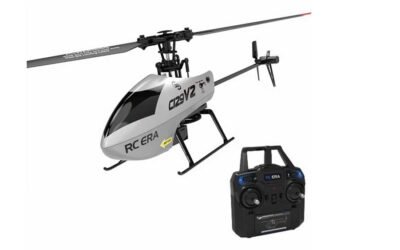
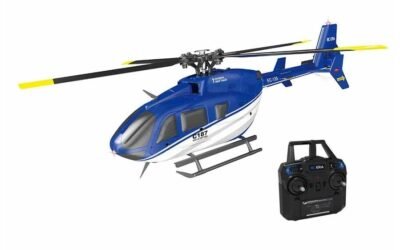
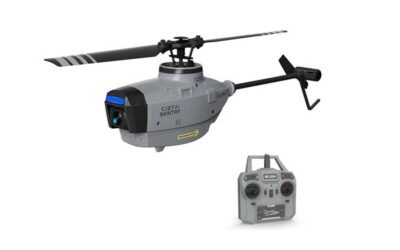
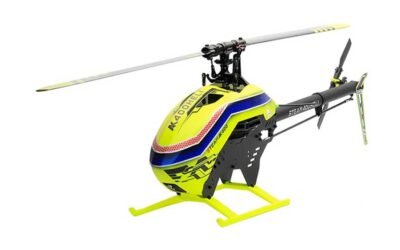
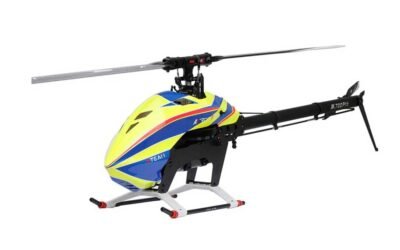
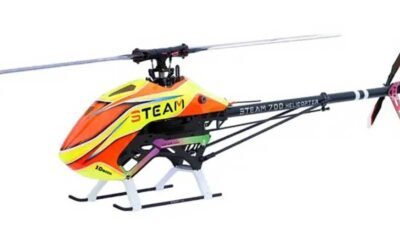
0 Comments